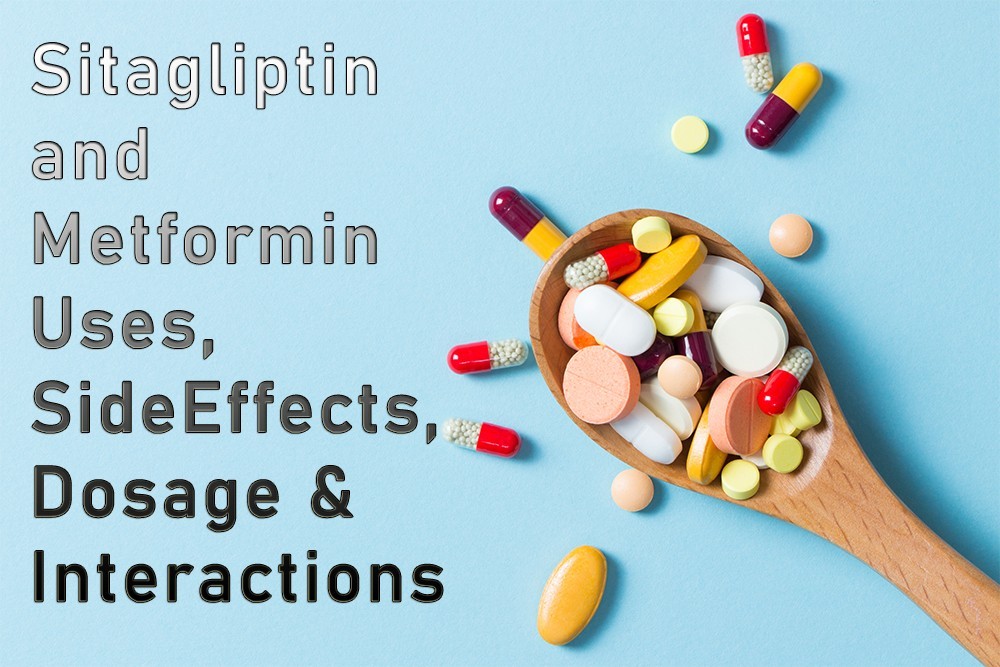
Contents
- 1 sitagliptin (Januvia)
- 1.0.1 What are the side effects of sitagliptin?
- 1.0.2 What is the dosage for sitagliptin?
- 1.0.3 Which drugs or supplements interact with sitagliptin?
- 1.0.4 Is sitagliptin safe to take if I’m pregnant or breastfeeding?
- 1.0.5 What else should I know about sitagliptin?
- 1.0.6 Summary
- 1.0.7 Related Disease Conditions
- 1.1 Diabetes (Type 1 and Type 2)
- 1.2 Type 2 Diabetes
- 1.3 Diabetes Treatment: Medication, Diet, and Insulin
- 1.4 Type 1 vs. Type 2 Diabetes: Differences
- 1.5 Diabetic Diet
- 1.6 Tips for Managing Type 1 and 2 Diabetes at Home
sitagliptin (Januvia)
Sitagliptin is an oral drug that reduces blood sugar levels in patients with type 2 diabetes. It is indicated as an adjunct to diet and exercise.
Sitagliptin should not be used in patients with type 1 diabetes or for the treatment of diabetic ketoacidosis, as it would not be effective in these settings.
Sitagliptin has not been studied in patients with a history of pancreatitis. It is unknown whether patients with a history of pancreatitis are at increased risk for the development of pancreatitis while using sitagliptin.
Sitagliptin is a member of a class of drugs that inhibit the enzyme, dipeptidyl peptidase-4 (DPP-4), and are therefore called DPP-4 inhibitors. Other members of the class include saxagliptin (Onglyza) and linagliptin (Tradjenta). Following a meal, incretin hormones such as glucagon-like peptide-1 (GLP-1) and glucose-dependent insulinotropic polypeptide (GIP) are released from the intestine, and their levels increase in the blood. GLP-1 and GIP reduce blood glucose by increasing the production and release of insulin from the pancreas. GLP-1 also reduces blood glucose by reducing the secretion by the pancreas of the hormone, glucagon, a hormone that increases the production of glucose by the liver and raises the blood level of glucose. The net effect is to reduce blood glucose levels. Sitagliptin inhibits the enzyme, DPP-4, that destroys GLP-1 and GIP, thereby increasing the levels and activity of both hormones. As a result, blood glucose levels fall. In summary, sitagliptin reduces blood glucose levels by inhibiting DPP-4 and increasing the levels of GLP-1 and GIP. Sitagliptin was approved by the FDA in October 2006.
What brand names are available for sitagliptin?
Is sitagliptin available as a generic drug?
Do I need a prescription for sitagliptin?
What are the side effects of sitagliptin?
WARNING
- There have been postmarketing reports of acute pancreatitis, including fatal and non-fatal hemorrhagic or necrotizing pancreatitis. If pancreatitis is suspected, promptly discontinue sitagliptin.
- There have been postmarketing reports of acute renal failure, sometimes requiring dialysis. Dosage adjustment is recommended in patients with moderate or severe renal insufficiency and in patients with ESRD. Assessment of renal function is recommended prior to initiating sitagliptin and periodically thereafter.
- There is an increased risk of hypoglycemia when sitagliptin is added to an insulin secretagogue or insulin therapy. Consider lowering the dose of the sulfonylurea or insulin to reduce the risk of hypoglycemia.
- There have been postmarketing reports of serious allergic and hypersensitivity reactions in patients treated with sitagliptin such as anaphylaxis, angioedema, and exfoliative skin conditions including Stevens-Johnson syndrome. In such cases, promptly stop sitagliptin, assess for other potential causes, institute appropriate monitoring and treatment, and initiate alternative treatment for diabetes.
- There have been no clinical studies establishing conclusive evidence of macrovascular risk reduction with sitagliptin or any other anti-diabetic drug.
Common side effects
The most common side effects of sitagliptin are:
- upper respiratory tract infection and
- headache.
Other important side effects of sitagliptin include:
QUESTION
What is the dosage for sitagliptin?
Sitagliptin may be taken with or without food. The recommended dose is 100 mg once daily. Renal function should be assessed prior to starting sitagliptin and periodically during treatment. The dose of sitagliptin should be modified based on renal function.
Which drugs or supplements interact with sitagliptin?
Sitagliptin may slightly increase the concentration of digoxin (Lanoxin) in the body when both drugs are being taken. Digoxin concentrations should be monitored appropriately. The occurrence of low blood glucose increases when sitagliptin is combined with a sulfonylurea or insulin. The dose of insulin or sulfonylurea should be reduced.
Is sitagliptin safe to take if I’m pregnant or breastfeeding?
There are no adequate studies of sitagliptin in pregnant women.
It is unknown whether sitagliptin is secreted in human breast milk.
What else should I know about sitagliptin?
What preparations of sitagliptin are available?
Tablets: 25, 50, and 100 mg
How should I keep sitagliptin stored?
Tablets should be stored at room temperature, 15-30 C (59-86 F)
Summary
Sitagliptin (Januvia) is a medication prescribed for the treatment of type 2 diabetes. It is combined with exercise and diet to improve blood glucose levels. Side effects, drug interactions, warnings and precautions, and pregnancy information should be reviewed prior to taking this medication.
Related Disease Conditions
Diabetes (Type 1 and Type 2)
Diabetes is a chronic condition characterized by high levels of sugar in the blood. The two types of diabetes are referred to as type 1 (insulin dependent) and type 2 (non-insulin dependent). Symptoms of diabetes include increased urine output, thirst, hunger, and fatigue. Treatment of diabetes depends on the type.
Type 2 Diabetes
Type 2 diabetes is a chronic condition that may be reversible with diet and lifestyle changes. Symptoms include excessive thirst, frequent urination, weight loss, fatigue, and an unusual odor to your urine. Most people don’t know they have type 2 diabetes until they have a routine blood test. Treatment options include medications, a type 2 diabetes diet, and other lifestyle changes.
Diabetes Treatment: Medication, Diet, and Insulin
The major goal in treating diabetes is controlling elevated blood sugar without causing abnormally low levels of blood sugar. Type 1 diabetes is treated with: insulin, exercise, and a diabetic diet. Type 2 diabetes is first treated with: weight reduction, a diabetic diet, and exercise. When these measures fail to control the elevated blood sugar, oral medications are used. If oral medications are still insufficient, insulin medications are considered.
Type 1 vs. Type 2 Diabetes: Differences
Diabetes mellitus is a metabolic condition in which a person’s blood sugar levels are too high. Over 29.1 million children and adults in the US have diabetes. Of that, 8.1 million people have diabetes and don’t even know it. Type 1 diabetes (insulin-dependent, juvenile) is caused by a problem with insulin production by the pancreas. Type 2 diabetes (non-insulin dependent) is caused by eating a lot of foods and drinking beverages with simple carbohydrates and simple sugars, consuming too many products with artificial sweeteners, lack of activity, exercise, stress, and genetics. While the signs and symptoms of both types of diabetes are the same, the treatments are different. Type 1 diabetes is insulin dependent, which means a person with this type of diabetes requires treatment with insulin. People with type 2 diabetes require medication, lifestyle changes, like eating a healthy diet, and getting regular exercise.
Diabetic Diet
A diabetic diet, or diabetes diet helps keep blood glucose levels in the target range for patients. Exercise and medication may also help stabilize blood glucose levels. Keeping track of when you take your diabetic medicine, keeping track of food choices, eating the proper amount of fruits, vegetables, carbohydrates, and fats will also help maintain proper blood glucose levels.
Tips for Managing Type 1 and 2 Diabetes at Home
Managing your diabetes is a full-time commitment. The goal of diabetic therapy is to control blood glucose levels and prevent the complications of diabetes. Information about exercise, diet, and medication will help you manage your diabetes better. Blood glucose reagent strips, blood glucose meters, urine glucose tests, tests for urinary ketones, continuous glucose sensors, and Hemoglobin A1C testing information will enable you to manage your diabetes at home successfully.


